Graham Witman's notes - grey - accessed and added after viewing and own notes made.
Personal notes in pink made while viewing and as discussionThe Neo-Avant-Garde
What is the avant-garde?
o 1825 socialist Henri de Saint-Simon Literary, Philosophical and Industrial Opinions
“We, the artists, will serve as the avant-garde: for amongst all the arms at our disposal, the power of the Arts is the swiftest and most expeditious. When we wish to spread new ideas amongst men …we inscribe those ideas on marble or canvas…We aim for the heart and imagination, and hence our effect is the most vivid and the most decisive.”
Avant-Garde - 1825 - Socialist writer Henri De Saint-Simon (?) - initially military term - new ideas - use art as political was of communicating
Gustave Courbet The Stonebreakers 1849
o end 19th century, understanding ‘avant-garde’ as critique of controlling socio-political system had given way to focus on aesthetic innovation e.g. Cézanne, Gauguin, van Gogh, et. al.
Gustave Courbet - Stonebreakers - 1849 - in terms of avant-garde - unrepresented subject - making a statement to the /opposing conventions of the time - socialist message of painting the underclass, the lack of direction/future/depression and discrepancy between classes.
Paul Cézanne Grounds of the Château Noir 1900-04
-
avant-garde synonymous with modern (unconventional, new, innovative)
Cezanne painting 1900-04- avant-garde used as modern - not subject matter challenging but technique 'radical' technique - challenging conventions - against the grain -
o in charged political climate after WWI, socio-politically critical avant-garde re-emerged
George Grosz Fat Cats 1920 (ink)
-
challenging conventional artistic practices meant challenging socio-economic-political system that upheld them (bourgeois capitalism)
Hugo Ball at the Cabaret Voltaire, Zürich 1916 (reading/performance)
Sophie Tauber Arp Dada Head.1920 (painted wood, glass beads on wire)
Meret Oppenheim Object (Fur Breakfast) 1936 (fur covered cup, saucer and spoon)
Salvador Dali Rainy Taxi 1938 (car, mannequins, lettuce, chicory, snails, water, shark skull, etc.)
between the wars - political avant-garde resurfaces - anti capitalism, left wing commentary. Both the technical radicalism and the radicalism of subject matter meld together. particularly in Dada - (ref, Vic reeves documentary on Dadaism on BBC )- stretching the boundaries of what is accepted as art. Surrealism - avant-garde, challenge of conventional art, practice and then also challenging the controlling systems that support and perpetuate the forms -
o on other hand, there was modern art (also given appellation avant-garde) apparently preoccupied with form and autonomous from concerns of social life
contemporary art now- installation etc is the 'norm' - no longer avant-garde, but derived from it.
Henri Matisse Harmony in Red 1908
o Matisse 1908 “A work of art must be harmonious in its entirety … What I dream of is an art of balance, of purity, of serenity, devoid of troubling or depressing subject-matter, a soothing, calming influence on the mind, something like a good armchair which provides relaxation from physical fatigue.”
a painting about painting - composition, line, texture, colour etc - subject not that important to Matisse. a work of are must be harmonious, soothing, comforting, providing relaxation from fatigue, not using harsh or troubling imagery, art to escape life. Having an aesthetic response that you cannot get from life.I haven't looked at matisse like that. My art education has been biographical regarding art and artists. I feel like so much meaning is lost in arts education before Undergraduate and postgraduate reading. Have I done my past students a dis service in not educating them about the meaning o art but rather the history of the artist lives, is it really that relevant. Does it matter how the artist lived, or were they lived or their parents occupation? Does that translate in to the work visibly or is it put there after?
Modernism and the neo-avant-garde
o after WWII, certain works/artists promoted and subsequently elevated to canonical status
Questioning whether the form of art is more important than the subject. Rodger Fry and Clive bell - critics, 'significant form' - Clement Greenberg - art for art's sake.
Jackson Pollock Lavender Mist 1950
o influence of Greenberg’s ideas
-
value/meaning of art inherent within formal characteristics distinctive of the medium –painting, two-dimensional surface, shape, colour –undisguised use of materials
-
good art operates exclusively within unique characteristics of its medium
Mark Rothko Black and Maroon 1958
-
good art values form over content – aesthetic effect over social meaning, political message (“subject-matter or content becomes something to be avoided like the plague”)
-
art should produced rarefied experience, different from experiences of everyday life and concerns of society
post-war - Pollock - painting about painting. the formal elements, Rothko as well, interpretation calls for discussion about colour shape etc in abstraction.
Robert Rauschenberg Erased de Kooning Drawing 1953 (ink and crayon)
o given the above, how do you view Rauschenberg’s work?
Robert Rauschenberg Canyon 1959 (oil, paper, card, metal, stuffed eagle, string, pillow, etc.)
o neo-Dada
simultaneously - Rauschenberg - 'dadaist' stand point - radical in comment, radical in its discomfort, challenging the art of the moment (abstract expressionists) "Neo-Dada'Neo-Avant garde - applied later on retrospective.
o Greenberg: art for art’s sake, art concerned with aesthetic expression
Anthony Caro Early One Morning 1962 (painted steel and aluminium)
Ed Kienholz State Hospital 1966 (bed, fibreglass, goldfish bowls, bed pan, electric light, etc.)
Anthony Caro - sculpture about sculpture - Edward kienholz - subject matter - considered neo-avant-garde, critical, causes discomfort, challenging the viewer. social and political.
o art should be autonomous and medium specific
Kenneth Noland Changement de transmission (Trans Shift) 1964 (acrylic)
Daniel Spoerri Kishka’s Breakfast No.1 1960 (chair, wooden board, coffee pot, china, glass, egg cups, cigarette butts, cans, etc.)
Kenneth Noland - painting and exploiting the medium, pushing it but not changing it ie: - watering down the medium-sculptural paintings, big no-no to Greenberg
o art should be protected from mass culture (kitsch)
Morris Louis Alpha Epsilon 1960
Andy Warhol Campbell’s Soup Cans 1962
Greenberg argues that art should be gallery based - high art - should be in a special place. Detached from everyday life, or 'Kitsch', commercialism, mass-communication - keeping art 'High' - Andy Warhol - Nemesis- using Kitsch and Mass media, not quite neo-avant-garde but thinks in a similar way.
Neo-avant-garde practice
o ideas of Greenberg and followers at odds with many pre-war artists
Claes Oldenburg The Store 1961 (paint, plaster, cardboard, muslin, display stands, other materials)
o 1961 Claes Oldenburg rented shop East Second Street, Manhattan, amongst others selling cheap and second-hand items
-
crudely modelled/painted cardboard, plaster and plaster-soaked muslin replicas of clothes, food, small objects from, displayed and sold
-
not gallery specific, disputes skill, not aesthetic, transient – like happenings
Claes Oldenburg and Patty Muschinski Snapshots of the City 1960 (performance)
-
no script, narrative, characterization; performed in non-theatrical settings to small audience
Oldenburg 1962: “Theatre is the most powerful art form there is because it is the most involving…I no longer see the distinction between theatre and visual arts very clearly”
Robert Whitman American Moon 1960 (performance)
o New York happenings influenced George Maciunas, who conceived Fluxus in early 1960s (organized concerts, Fluxfests internationally)
Neo-avant-garde practice - Claes Oldenburg - art leaves the gallery - challenging the ideas of what art 'should be', taking it out of gallery, making it accessible to wider audience, and challenges the technical skill of classical artists. Happenings - now known as performance pieces - non-scripted, activities/actions - no characterisation etc. bringing theatre and visual art together.
Nam June Paik Zen for Head 1962 (performance)
Shigeko Kubota Vagina Painting 1965 (performance)
Fluxus - activities, music, concerts etc: Nam June Paik, performing a painting - music provided from another artist, so creation of art becomes the work... both the action and the product is art: are they the same piece or different pieces? Shigeko Kubota - vagina painting - underclothes?
o central to Neo-avant-garde practice – idea of art as what the artist does
-
pastiche of conventional art (by association, of supportive socio-political structures)
Vito Acconci Trademarks 1970 (performance)
Bruce McLean Pose for Plinths 3 1971 (photograph)
Bruce Nauman Self Portrait as a Fountain 1966-67 (photograph)
-
by 1970s this strategy used by artists responding to gender politics
parody of art - Bruce McLean - comedy of art, mocking the art world, Bruce Nauman - fountain - ref to Duchamp fountain - photograph - what is it achieving? the artist is the work of art.
Ana Mendieta Untitled (Rape Scene) 1973 (photograph, originally a performance)
Carolee Schneemann Interior Scroll 1975 (performance)
Martha Rosler Semiotics of the Kitchen 1976 (video performance)
Feminist art works, Ana Mendieta - performance of rape scene - photograph, 1973 - Carolee Schneemann - interior scroll - radical because of spectacle, what is the message? body as object, statement of women in art, perpetuating the form of women in art, nudes. Use of films, performance, domestication, aggression, stereotypes of women's place, parody of expectations - expectations of art, do we now expect art to make a statements, to shock us - The Shock of the New - book
o destruction as creative process
Saburo Murakami Passing Through 1956 (performance)
-
Gutai (concrete) group – ‘beauty’ of destruction
Gustav Metzger Demonstration of Auto-destructive Art London 1961 (fabric, metal frame, acid)
o “Auto-destructive art is an attack on capitalist values and the drive to nuclear annihilation” (Metzger Auto-Destructive Manifesto 1960)
Hermann Nitsch 4. Aktion 1963 (performance)
-
Viennese actionists took part in 1966 Destruction in Art Symposium (DIAS), London organized by Metzger
Destruction as technique/work - creativity in destruction. Vienna Activists - is it politically or socially critical? shock and awe, provocative, but not necessarily linked to a direct challenge to control or politics. Is non-conformist to expectations of art world, and the systems that support the art world, sponsors, gallery's, state supporters etc.
Yoko Ono Cut Piece first performed 1964, repeated at DIAS 1966 (performance)
John Latham Skoob Tower ceremony: National Encyclopaedias 1966 (performance/action)
o National Encyclopaedias, Laws of England, etc. burnt outside Law Courts, British Museum, University of London Senate House.
Problem with Neo-avant-garde, means that once its been done it become accepted - more contentious, more shocking etc- forever pushing the boundaries, where does it stop - artist that cut himself and bled down the catwalk - Yoko Ono having clothing cut off - Marina Abramovic (?), John Latham Skoob Tower ceremony, symbolistic burning of law books etc, what is acceptable by art world and general public.
Contexts of the neo-avant-garde
George Maciunas Fluxus Manifesto 1963 (collage of photostat text and hand-written text)
o associating old and new cultural modes with the political
o burgeoning discontent (with establishment control) reached head 1968
-
manifest in hostility to USA
Grosvenor Square protest, London, 17 March 1968 (photograph)
Social and political contexts - Fluxus Manifesto - George Maciunas - his understanding of fluxus - purge bourgeoisie sickness, political language, left wing, marxist, communist manifesto - although directly related to art - using art as political 'propaganda' (?) or statement/support for views - a way of releasing views and ways of thinking.1968 - assignation of Martin Luther King, anti american protests, - 60yrs ago
o escalation of Vietnam War and growing opposition to it
Martha Rosler Balloons from the series Bringing the War Back Home 1969–72 (collage)
Cildo Meireles Insertions into Ideological Circuits: Coca Cola Project 1970 (bottles)
Paris riots, May 1968 (photograph)
o Alain Jouffroy What’s To Be Done About Art? (1968)
“It is essential that the minority advocate the necessity of going on an ‘active art strike’ using the machines of the culture industry to set it in total contradiction to itself. The intention is not to end the rule of production, but to change the most adventurous part of ‘artistic’ production into the production of revolutionary ideas, forms and techniques.”
o counter-culture – youth, leftist politics, anti-capitalism, nuclear disarmament movements, equality movements: women’s movement, civil rights
Martha Rosler - photomontage/collage - middle class bourgeois and Vietnam atrocities -paris 'unrest' revolution- V for vendetta film, just watched this weekend - seems significant - timeline is current for film. Neo-avant-garde were the forerunners of these interactions.
Joseph Beuys The Revolution is Us 1972 (screen print)
Can anyone be an artist? - Joseph Beuys -
Neo-avant-garde interpretations and meaning
o 1974 Peter Bürger Theory of the Avant-Garde considered ‘neo-avant-garde’ ineffectual as means of critical opposition to the controlling political and cultural élite because it repeated failed strategies used by interwar avant-garde (e.g. Dada/Surrealism)
Yves Klein Untitled Anthropometry (ANT, 123) 1961
-
moreover, some ‘neo-avant-garde’ work purchased by museums/collectors, so it was institutionalized by the élite with which it sought to take issue
Yves Klein Anthropometries of the Blue Epoch 1960 (performance)
Jean Tinguely, Niki de Saint-Phalle, unidentified man Shooting 1961(action, using firearms, pigment in sacks, plaster, assemblage of objects on board)
Niki Saint-Phalle Shooting 1961 (plaster, objects, paint)
Piero Manzoni Artist’s Shit 1961 (tin can, label, excrement)
John Latham Still and Chew 1966-69 (leather case, book, letters, photostats, labelled vials filled with powders and liquids)
o therefore, do you think neo-avant-garde most effective using strategies that cannot be easily assimilated into mainstream?
interesting to discuss whether it was 'successful' or 'failed' as it is thought. We can only reflect as we are looking back and did not experience it of the moment. The aspect of the neo-avant-garde being embedded in the cultural/social commentary they are attempting to challenge and become part of the establishment. It is the reflection that gives value and weight to the work, the writing and commentary, the attention it garners that makes the work important and gives it statement value. so can any work of art now actually be critical as it is embedded in the establishment. Even street artist now are commercial and create murals for commissions - is Banksy one of the few that do it for the political voice - do we know that for sure as the path to the works is secretive.
Hans Haacke MoMA Poll 1970 (participatory installation)
o New York Governor Nelson Rockefeller, member of MoMA trustees, planning to run for President
-
Question: Would the fact that Governor Rockefeller has not denounced President Nixon’s Indochina policy be a reason for you not to vote for him in November?
Answer: If ‘yes’ please cast your ballot into the left box; if ‘no’ into the right box
Stuart Brisley You Know it Makes Sense 1972 (performance)
o 1972 PM Heath, claimed to have banned notorious torture methods
-
performance over several days, with no re-enactment of alleged torture techniques
-
performance created atmosphere suggesting use of violent torture
Chris Burden Trans-fixed 1974 (performance)
o nails hammered into hands; car pushed out of garage; engine revved for 2 minutes; pushed into garage
There are artists that are genuine - Hans Haacke - MoMA poll 1970 at museum of modern art - makes a statement to the board of trustees that Rockefeller was on and the bombing a supporting nixon - trustee - so risky and attacking the establishment that its in. Stuart Brisley - performance of 1972 - suggestion of torture - indirect - looks like a Bacon painting.
Hannah Wilke Through the Large Glass 1976 (performance)
o Brooklyn Museum caption
“Dressed in a fedora and a man’s white satin suit, she strikes a series of poses evoking the style of 1970s fashion photography and then strips, cleverly suggesting bride and bachelor simultaneously. In her self-conscious affectation of a fashion model, Wilke wilfully uses her own image and her sexuality to confront the erotic representation of women in art history and popular culture”
o if neo-avant-garde is a ‘true’ avant-garde, how far do such works contest ruling socio-economic-political system that upholds and perpetuates conventional art?
-
Bürger believed neo-avant-garde was ineffectual as a critical opposition because it merely replicated failed strategies of Dada and Surrealism
-
what if new strategies are adopted?
Margaret Harrison, Kay Hunt, Mary Kelly Women and Work: A Document on the Division of Labour in Industry 1973-75 1973-75 (photographs, charts, tables, photocopied documents, film loops, audiotapes)
o sociological study of women’s work in Bermondsey metal box factory
-
photographs, typewritten texts, photocopied punch cards, pay rates accounting for 150 women in relation to recently passed Equal Pay Act
Margaret Harrison, Kay Hunt, Mary Kelly Women and Work: A Document on the Division of Labour in Industry 1973-75 1973-75 (photographs, charts, tables, photocopied documents, film loops, audiotapes)
o recorded gap in wages between men and women
-
raised issue of domestic labour, as many women worked when they got home
o presented as documentary/sociological research
-
no obvious aesthetic intention
Victor Burgin Possession 1976 (poster)
-
posters on streets of Newcastle using advertising to critique system it endorses
Jo Spence Hackney Flashers 1978 (photographs and text)
o “to document women in Hackney, at work inside and outside the home, with the intention of making visible the invisible, thereby validating women’s experience and demonstrating women’s unrecognised contribution to the economy”
Hannah Wilke - Graham 'whitman - is dismissive of feminist art work? - preferring sociological study style - rather than 'obvious' depictions of women - but in feminist artwork is could be argued that a lot of it is obvious - depicting domesticity etc - is that because women are less accepted in the art world (or were) and there fore have a harder time being taken seriously as meaningful artists so work has to be contrite and blatant to be seen in institutions. Large majority of artists in this lecture are male - because of dominance or because of exclusion form the art world.
is this the future?
o Artist Placement Group (APG) founded by Barbara Steveni and Latham 1966 (also 1966 similar US manifestations: Experiments in Art and Technology, NY; Art & Technology Program, LA)APG in Germany 1970 at left: John Latham, Ian Breakwell; centre: Barbara Steveni
-
art in social context
-
artists placed in companies/organization (first 1969)
-
paid as worker, but retained artistic autonomy
Stuart Brisley Hille Piece 1970 (chairs)
o various artists produced films, photographs, texts, installations
-
criticism of APG supporting private enterprise
-
after Arts Council withdrew funding 1972 (because “the APG is more concerned with Social Engineering than with pure art”) placements in public sector
Stills from Ian Breakwell The Institution 1978 (film)
o Department of Health and Social Security placement at Broadmoor and Rampton hospitals
-
resulted in film and report, co-written with architects, recommending significant changes at Rampton
o neo-avant-garde proposed that art has radical effect outside itself
-
i.e. that it can impact on and influence social, political, economic life but how far might this be true?
Artist placement group- using artists to give a different view point - the power of a creative mind, the act of creative seeing things from a different point of view and having different solutions to problems that may or may not have been identified. become more embedded and they inform accepted ways of working now. Its no longer spectacle or surprising - is it harder to make a statement now? is it expected to make a statement now? is work valued different with relevance to whether it is is making a statement about art or a political sociological statement? Are there trends regarding the statements people want to read ie: middle eastern art and refugees crisis, or african commentary on slavery and colonialism? North atlantic commentary of climate change? South american commentary on border controls ?


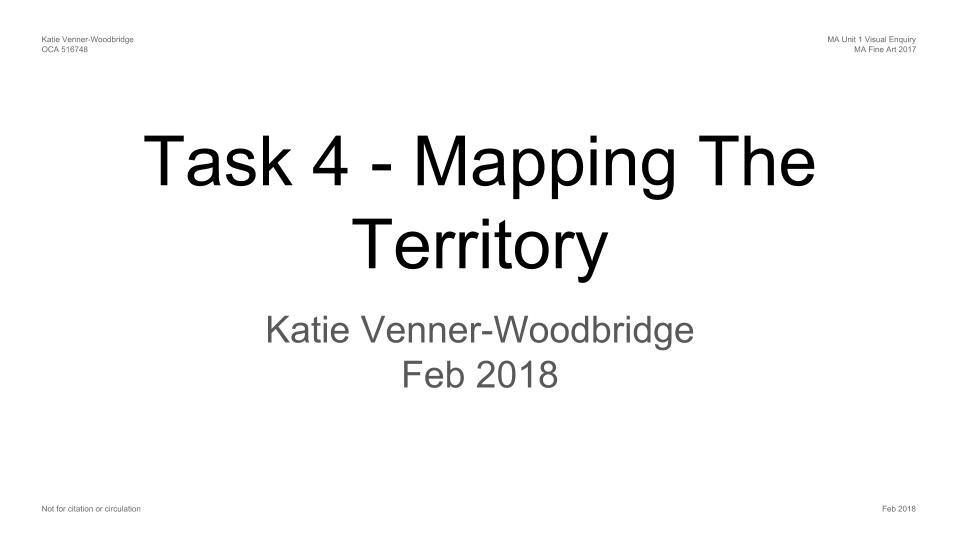
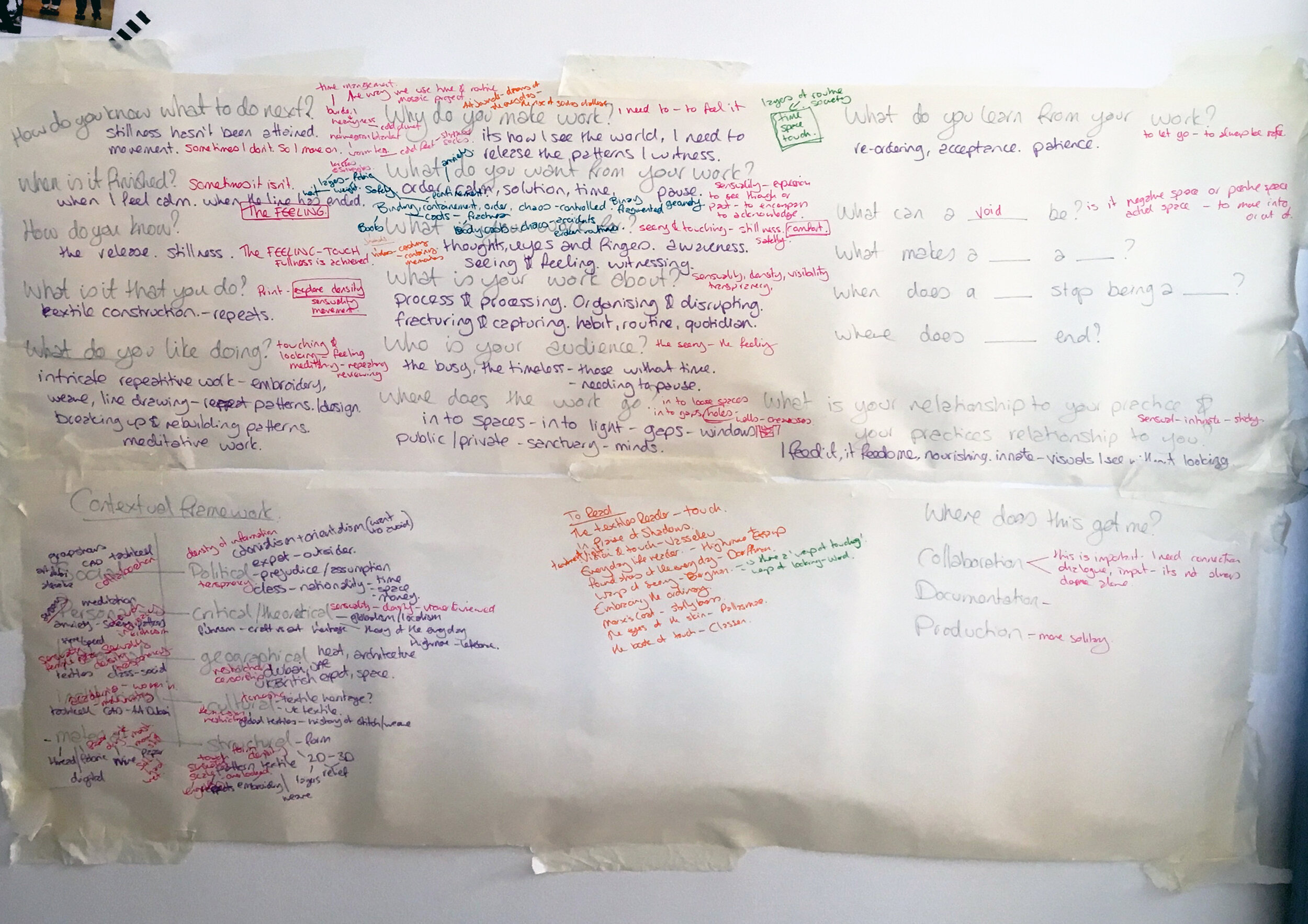

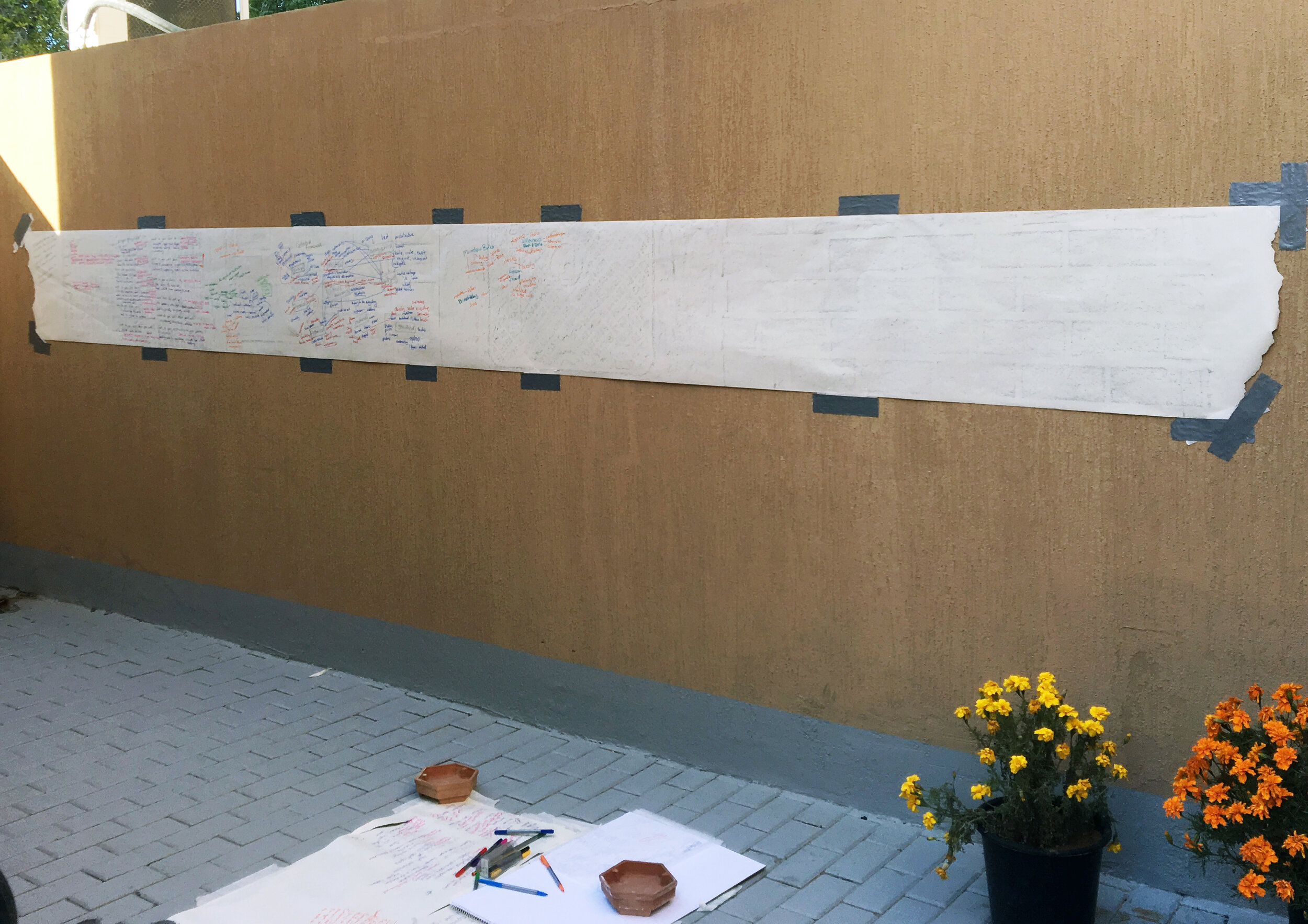


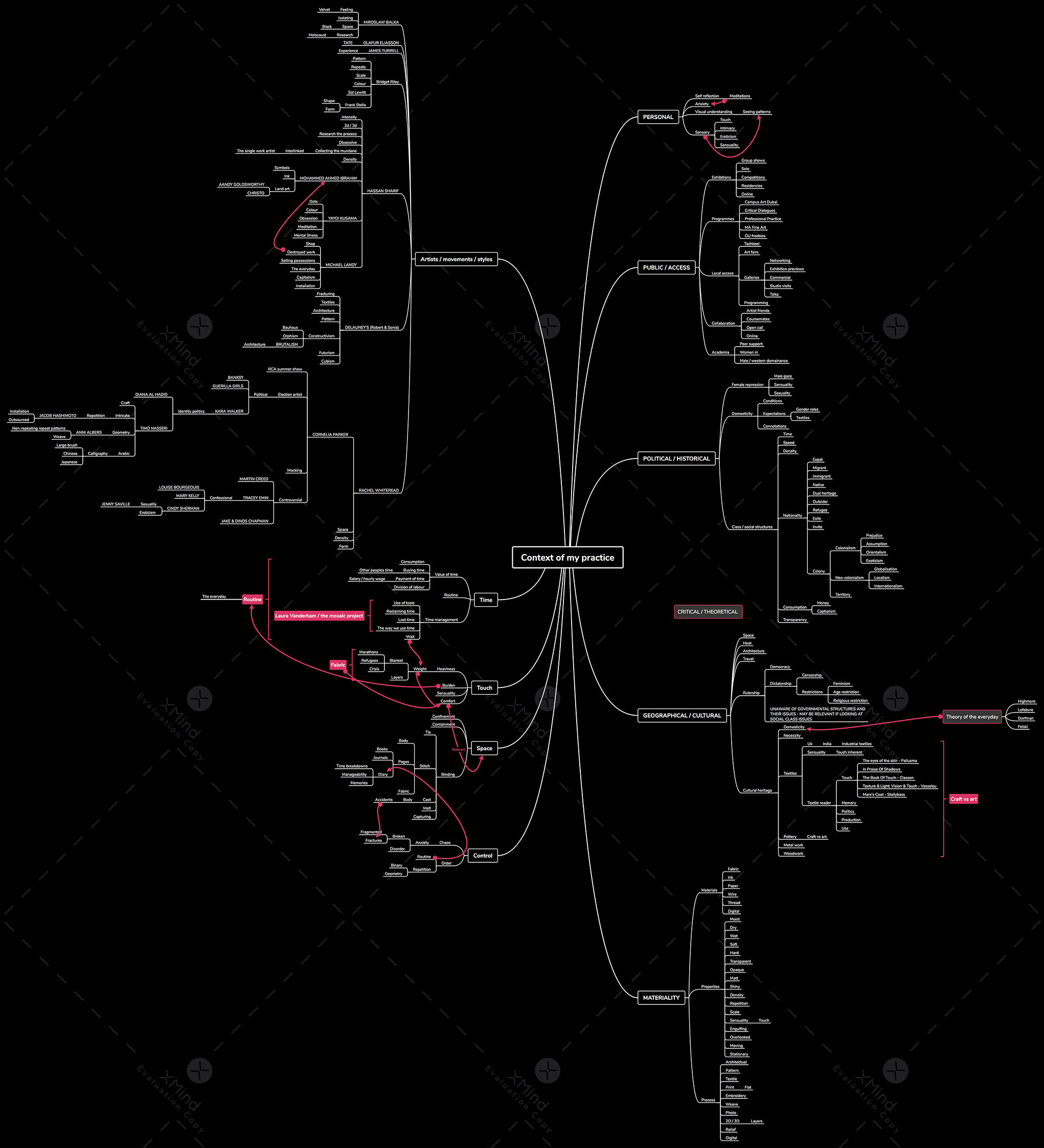

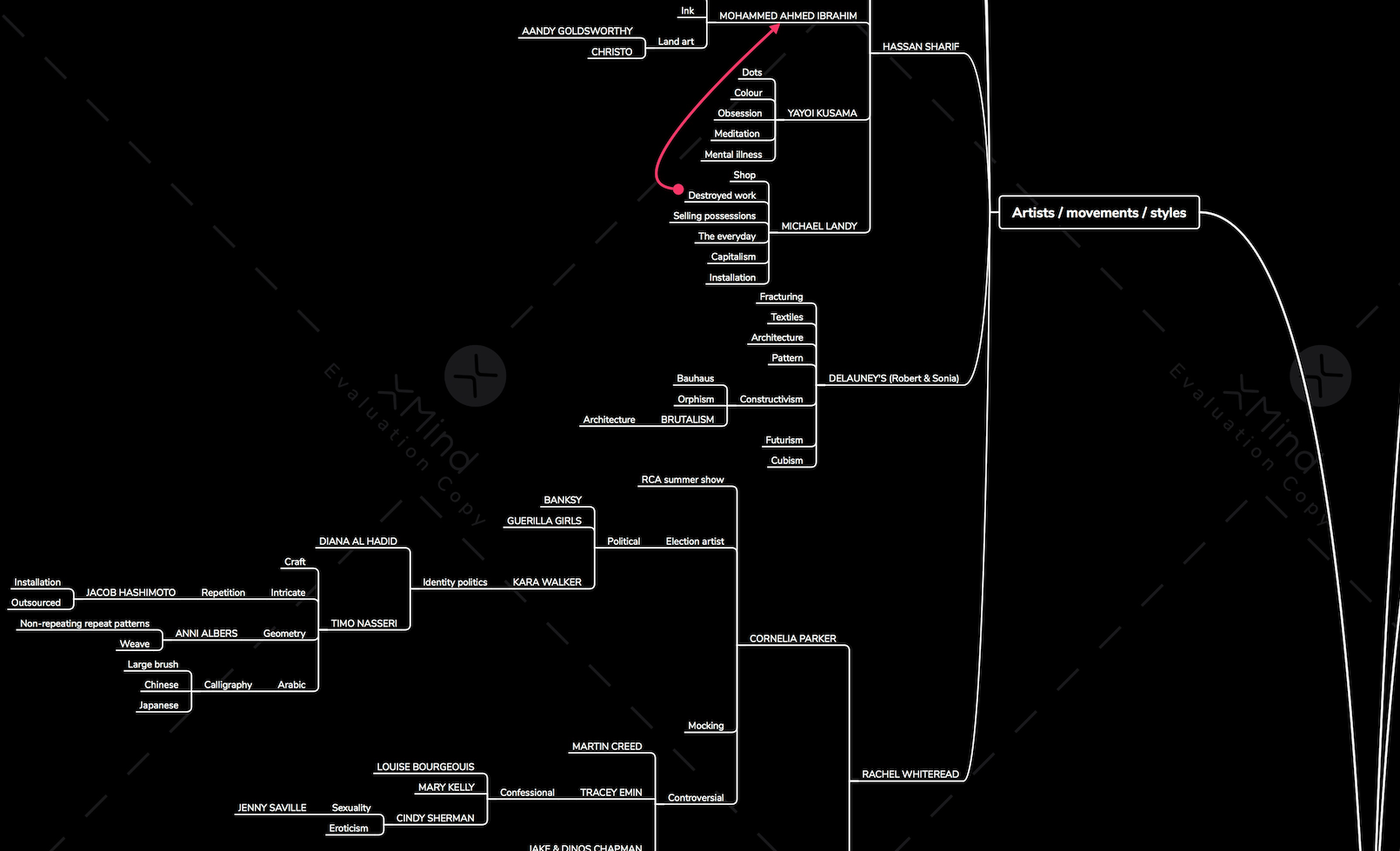
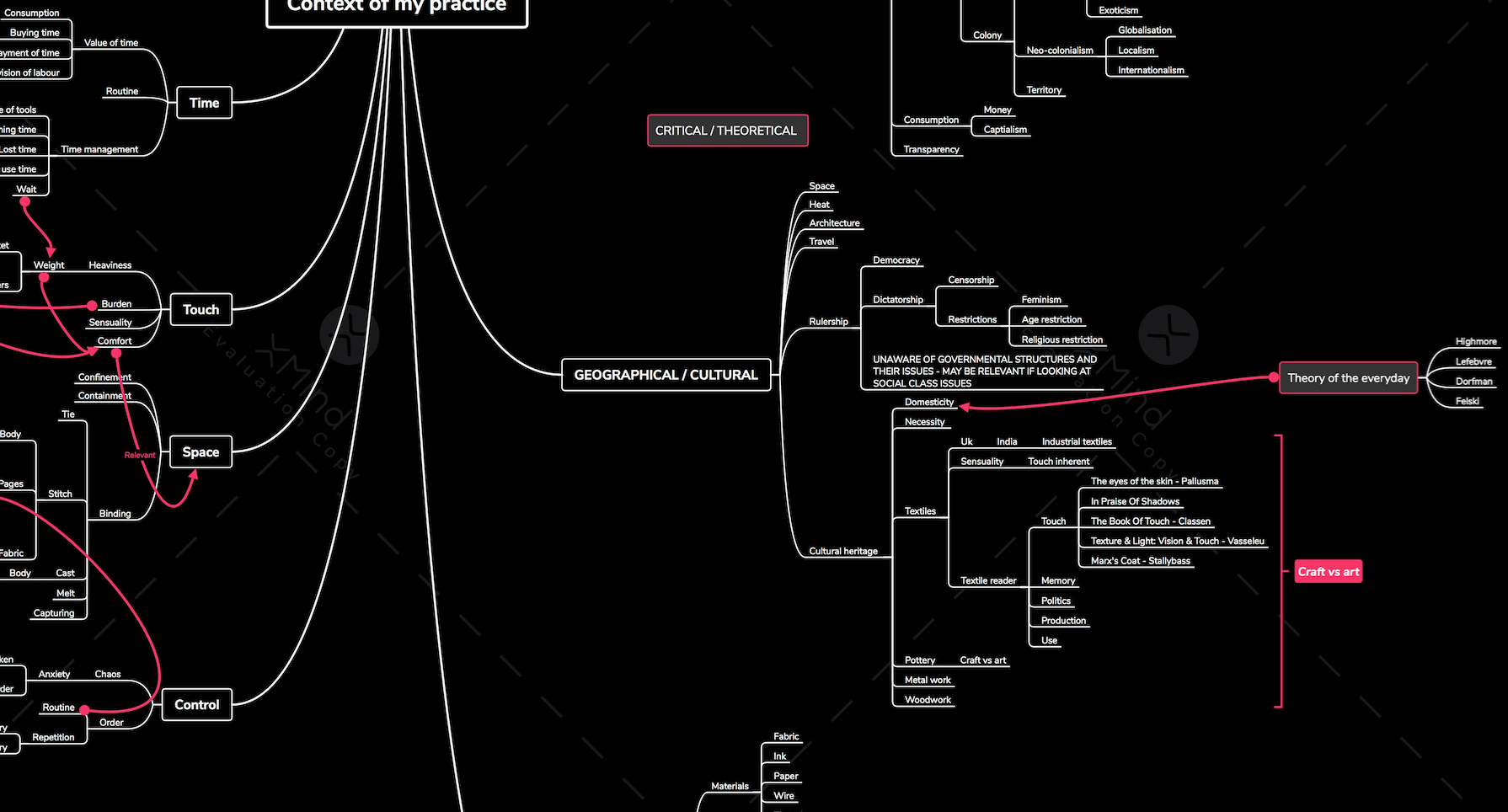


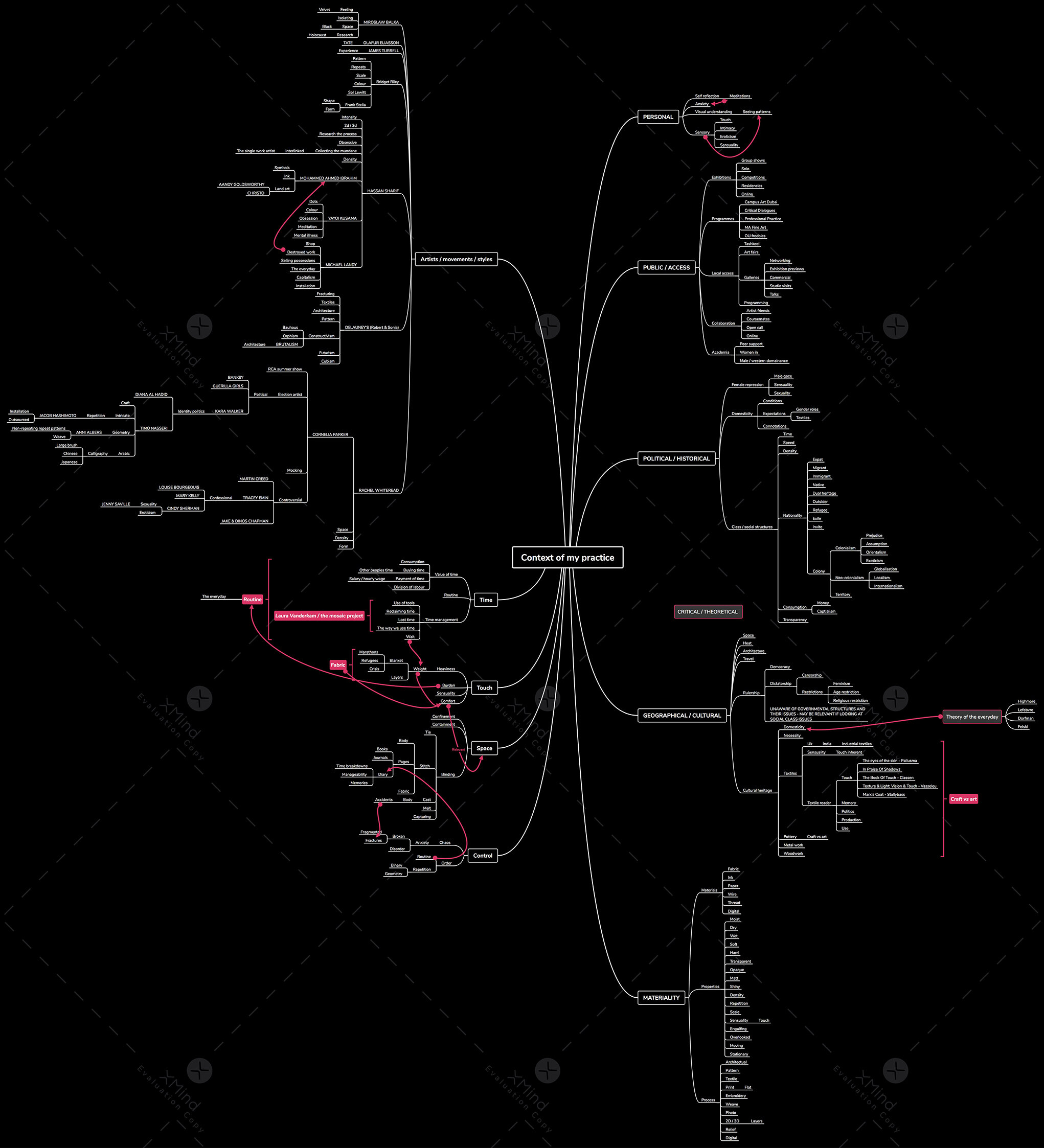


 Using the tracing paper have another aspect to note taking, allowing them to literally overlap and intertwine.Below are the individual pages, scanned and manipulated to show contents clearly.
Using the tracing paper have another aspect to note taking, allowing them to literally overlap and intertwine.Below are the individual pages, scanned and manipulated to show contents clearly.




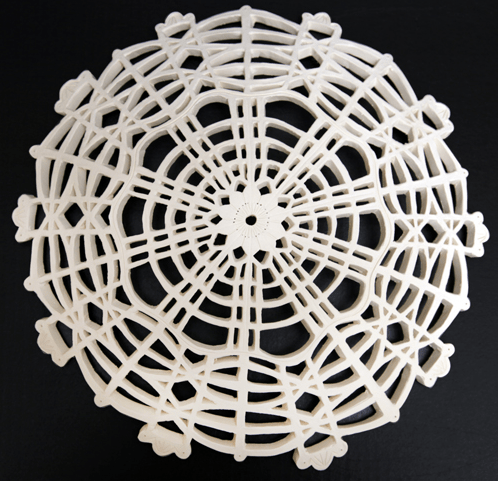


 (screenshots of website)the fragility of time? life? but why? for what purpose?Rokni Haerizadeh -
(screenshots of website)the fragility of time? life? but why? for what purpose?Rokni Haerizadeh -  (
(